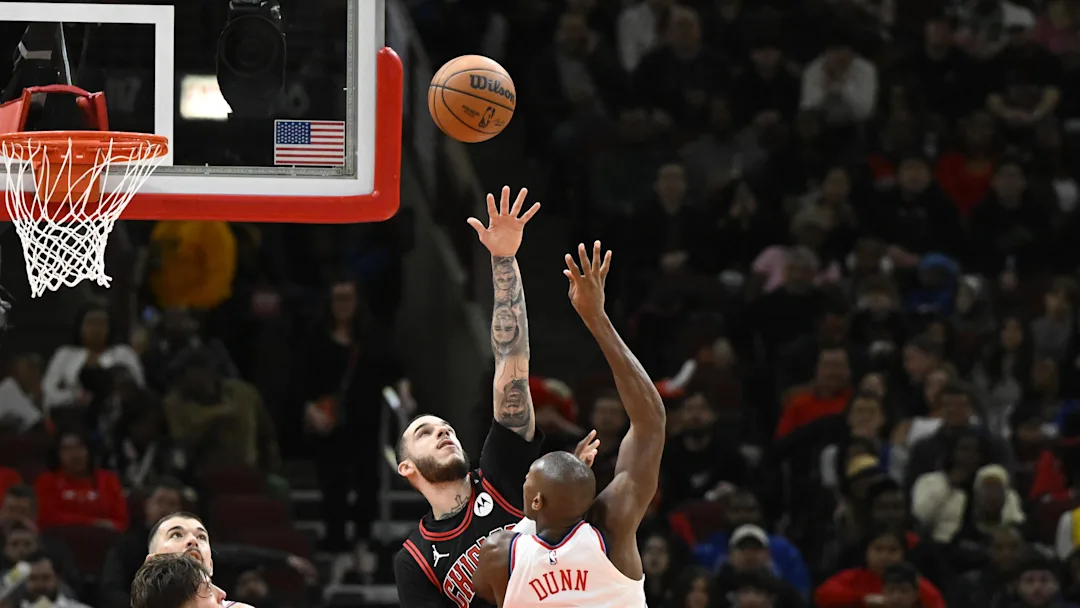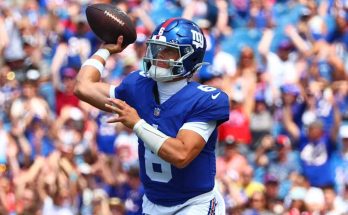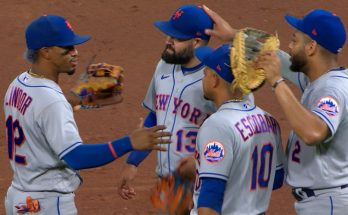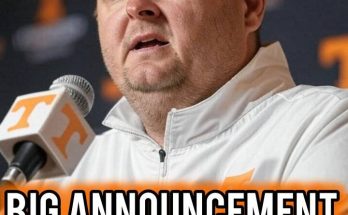The Indiana Pacers were dealt a crushing blow when Tyrese Haliburton suffered a torn Achilles tendon late in the 2025 NBA Finals, effectively ending his season and leaving the franchise scrambling to find a suitable replacement. Haliburton was more than just a star player; he was the team’s engine, their primary playmaker, and a key leader on and off the court. His ability to orchestrate the offense, create for teammates, and keep the team’s tempo humming made him irreplaceable in a short span. Facing a full season without him, the Pacers’ front office had a difficult decision to make: attempt to trade for a veteran guard who could fill Haliburton’s shoes, or develop from within.
Among the trade options considered, a deal involving a guard with a roughly \$20 million salary came into serious discussion. That player was Lonzo Ball, a left-handed point guard known for his passing ability, defensive acumen, and steady leadership. Ball had been with the Chicago Bulls before being made available in trade talks. His skill set appeared to align with some of the traits the Pacers needed: playmaking, the ability to push the pace, and solid defense. Financially, the \$20 million price tag seemed reasonable given the premium on quality guards in the league. Yet, despite the initial appeal, the Pacers ultimately decided against pursuing Ball.
The decision boiled down to fit and value. While Ball is a competent player, he was not considered an upgrade on Haliburton’s unique talents. Haliburton’s assist-to-turnover ratio, court vision, and overall offensive impact were on a different level. Ball’s style of play was slower and more methodical, lacking the explosive creativity that made Haliburton’s game so effective. Indiana’s offense was built around a fast-paced, high-efficiency system, and the Pacers believed that Ball’s strengths would not translate seamlessly into that framework. Paying \$20 million for a player who might only partially fill the role and potentially hamper the system was viewed as an inefficient use of cap space and assets.
Instead of forcing a trade for a veteran, the Pacers opted to lean on their internal options. Andrew Nembhard, who had spent the previous season as a backup and occasional starter, was elevated to the starting point guard role. Nembhard was no Tyrese Haliburton, but he had shown promising flashes of being a capable floor general with solid passing skills and a knack for running the offense efficiently. His familiarity with the team’s system and chemistry made him a logical choice. Alongside him, the Pacers drafted Taelon Peter late in the 2025 NBA Draft—a high-efficiency, two-way combo guard known for his shooting prowess and athleticism. While Peter was unlikely to immediately replace Haliburton’s production, his potential upside was an important piece of the puzzle.
The choice to develop from within reflected a broader philosophy by the Pacers’ management: preserve roster continuity and flexibility, rather than hastily spending significant salary or trading away future assets. Haliburton’s injury was a setback, but the team did not want to risk long-term damage to their core by mortgaging the future for a quick fix that might not pan out. This cautious approach emphasized the importance of financial prudence and the belief that internal development—whether through Nembhard stepping up or Peter’s growth—could bridge the gap.
Of course, the idea of bringing in a \$20 million veteran guard was tempting. The NBA’s landscape often pushes teams to chase quick fixes to replace injured stars, especially those as impactful as Haliburton. But the Pacers’ evaluation concluded that the return on investment was insufficient. Lonzo Ball’s contract and skill set, while serviceable, did not promise the transformative impact needed to compensate for Haliburton’s absence. The risks—both financially and strategically—outweighed the benefits.
The Pacers also considered other veteran guards rumored to be available in the market. Players like Malcolm Brogdon, who could bring leadership and steady playmaking, were floated as possibilities, but again, these veterans had limitations. Brogdon’s style, for example, was more deliberate and less dynamic than Haliburton’s fast-paced, aggressive offense required. Similarly, younger players like Anfernee Simons were discussed, but these discussions never gained serious traction, either because of cost, fit, or the risk of destabilizing the team’s chemistry.
This entire episode highlighted a difficult truth in the NBA: replacing a star player like Haliburton is never as simple as finding someone with a similar salary or skillset. The intangible qualities—leadership, team chemistry, high basketball IQ, and the ability to elevate teammates—are incredibly hard to replicate. While Lonzo Ball and others brought some of those elements to the table, they lacked the combination of efficiency, creativity, and leadership that made Haliburton such a special player.
Indiana’s decision to forego a blockbuster trade and instead focus on internal growth can be viewed as a long-term investment. Andrew Nembhard’s opportunity to prove himself as a starting-caliber point guard is significant. If he succeeds, the Pacers will have salvaged the season without sacrificing their future. Meanwhile, the addition of Taelon Peter provides a developmental wing who could grow into a valuable rotation player in years to come. These moves maintain cap flexibility, keep the core intact, and provide a roadmap for sustainable competitiveness, even without their injured star.
Behind the scenes, the Pacers also made strategic moves to preserve their future. For example, reacquiring their 2026 first-round pick from previous trades ensured the franchise still had draft capital to leverage for future roster improvements or rebuilding efforts. This foresight suggested the team anticipated the injury might mean a transitional season, but they remained committed to building for long-term success rather than risking everything in a one-season sprint.
The fanbase’s reaction to the injury and the subsequent trade discussions was understandably mixed. On one hand, there was disappointment and concern over losing a franchise cornerstone. On the other, many appreciated the front office’s cautious, patient approach. The allure of a flashy trade or signing a high-profile guard might have offered hope for a quick fix, but it also carried the risk of damaging the team’s future. The Pacers chose the safer path.
In the broader context of the NBA, the Pacers’ situation is not unique. Teams often face the dilemma of replacing star players due to injuries or trades, and each franchise must balance short-term competitiveness with long-term viability. For Indiana, the Haliburton injury forced a reckoning, but it also reaffirmed their organizational philosophy: build through smart drafting, player development, and maintaining financial flexibility.
Ultimately, the story of the \$20 million Tyrese Haliburton replacement trade talks is one of measured restraint. It’s a tale of a franchise navigating the challenges of a catastrophic injury while avoiding the pitfalls of desperation. The Pacers made it clear they were not willing to overpay or disrupt their system for a stopgap solution. Instead, they placed faith in their existing players, young prospects, and a culture that valued growth and stability.
While the upcoming season without Haliburton will certainly be a test, the Pacers have positioned themselves to survive the storm. Whether Andrew Nembhard can step up as a reliable floor leader and whether Taelon Peter can develop into a useful rotation piece will determine how well the team adjusts. But the avoidance of a costly, rushed trade to bring in a \$20 million veteran guard highlights a strategic mindset focused on resilience and prudence.
In the end, replacing a player like Tyrese Haliburton is no easy task. His injury was a setback that challenged Indiana’s ambitions, but the franchise’s response—opting for internal solutions over expensive external fixes—reflects a clear-eyed vision for the future. They are prepared to weather the transition year, develop their young talent, and keep their core intact. That may not feel like the flashiest response, but it could very well be the wisest.



